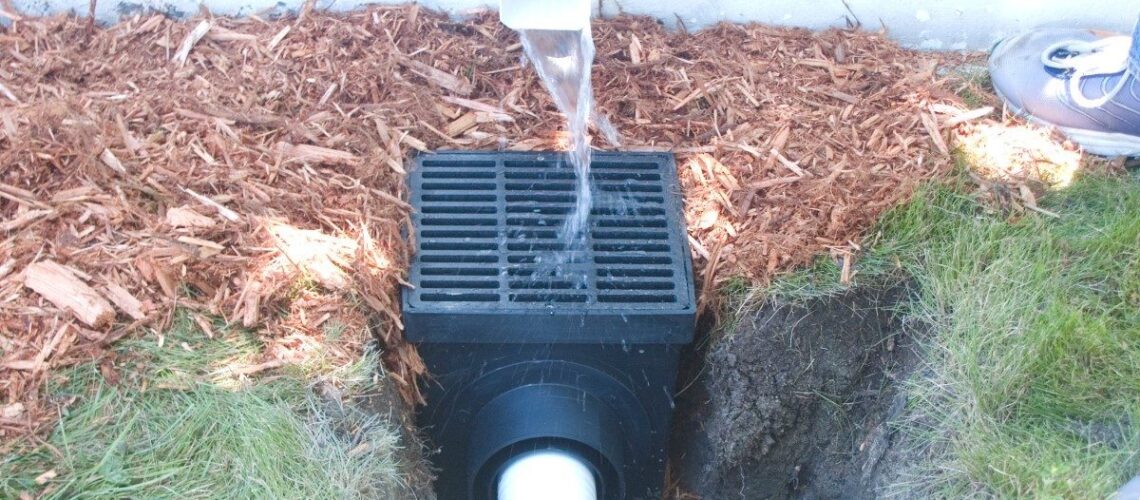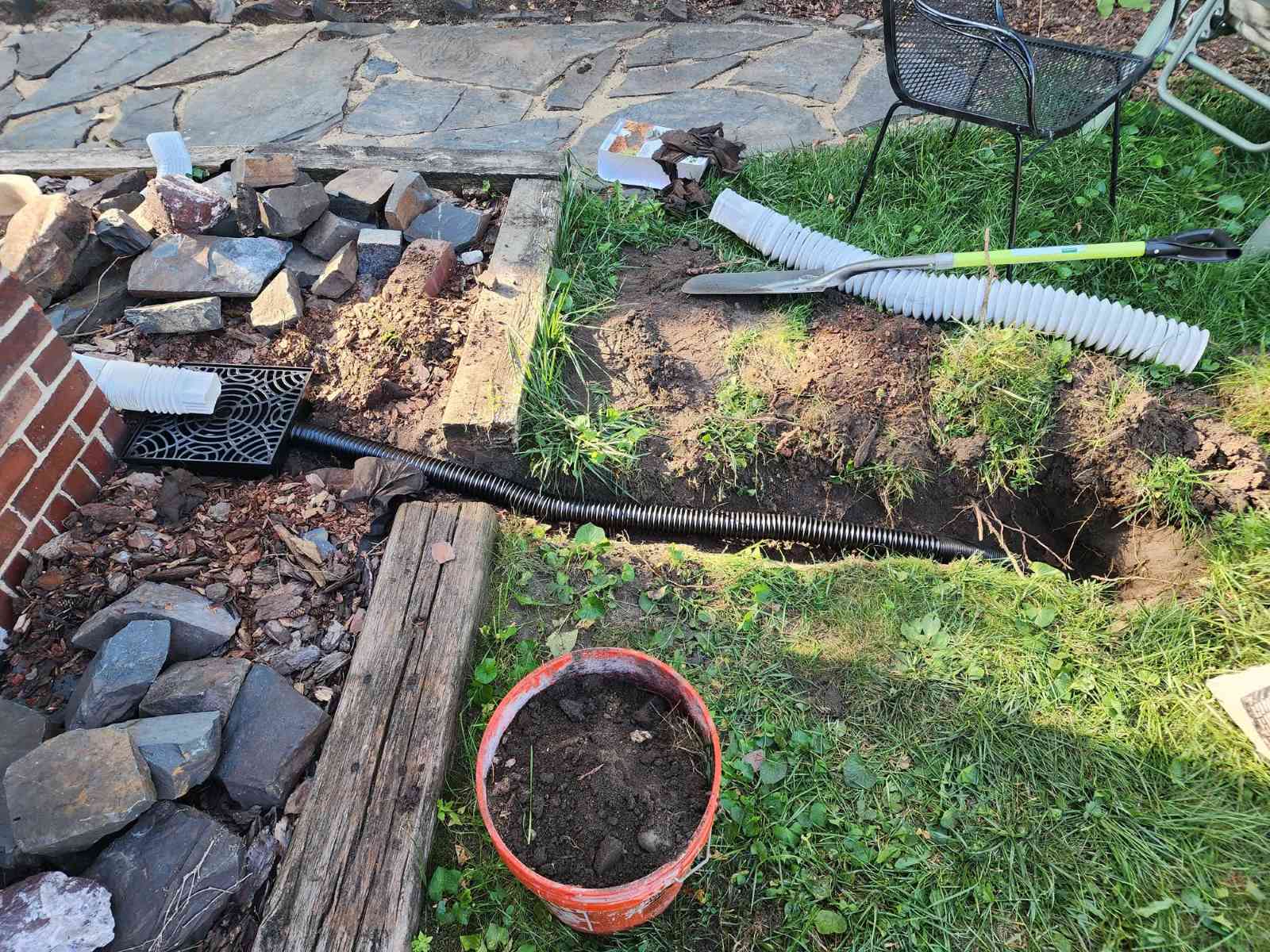Essential Drainage Solutions for a Healthy Garden
November 7, 2024

Proper drainage is one of the most important factors for creating and maintaining a healthy garden. Excess water can suffocate plant roots, leading to root rot, mold, and fungal diseases, while inadequate water drainage can leave plants thirsty and stressed. To keep your garden thriving, it’s essential to address drainage for garden issues. Here are some of the most effective drainage solutions for a healthy, vibrant garden.
1. Understand Your Soil Type
Soil type plays a significant role in your garden’s drainage. Some soils, like clay, retain water and drain slowly, while sandy soils allow water to pass through quickly. Knowing your soil’s composition is the first step toward improving its drainage.
- Clay soil may require the addition of organic matter like compost to break it up.
- Sandy soil might benefit from amendments to help retain some moisture, such as compost or mulch.
Improving your soil structure is essential for a long-term drainage solution, as it can help manage water more effectively.
2. Build Raised Beds
One of the most effective ways to improve drainage is by creating raised beds. Raising your garden beds above ground level helps water flow away from plant roots, preventing waterlogging and root rot. Raised beds are particularly useful for heavy clay soils or areas with poor natural drainage.
Benefits of raised beds:
- Better soil aeration
- Improved drainage
- Easier access to plants
- Warmer soil in the spring
You can make raised beds from wood, stone, or brick, and they can be customized to suit your garden’s specific needs.
3. Incorporate Organic Matter
Adding organic matter to your soil is one of the most effective and natural ways to improve drainage. Compost, leaf mulch, well-rotted manure, and other organic materials help to break up heavy, compacted soil, creating space for air and water to flow through.
- Compost is especially helpful in clay-heavy soils because it improves both the soil’s structure and its ability to drain.
- Mulch helps to prevent evaporation, keeps soil temperature regulated, and slowly breaks down to add more organic material.
4. Install a French Drain System
For gardens with persistent drainage problems or areas where water tends to pool, a French drain is a highly effective solution. A French drain is a trench filled with gravel or rock that contains a perforated pipe designed to carry excess water away from your garden.
How to install a French drain:
- Dig a trench in the area where water accumulates.
- Line the trench with landscaping fabric to prevent soil from clogging the gravel.
- Fill the trench with gravel, and place the perforated pipe on top.
- Cover the gravel with more fabric and soil to create a neat, functional surface.
A French drain can be used in combination with other solutions for optimal results.
5. Use Dry Wells for Excess Water
In areas where water tends to pool or collect, a dry well can be an excellent solution. A dry well is an underground structure that collects and temporarily stores excess water, allowing it to seep slowly back into the ground.
How to install a dry well:
- Dig a hole in the lowest part of the garden where water collects.
- Line the hole with a perforated container or a pipe.
- Fill the well with gravel, which allows water to drain through and slowly seep into the surrounding soil.
Dry wells are ideal for gardens with poor natural drainage and can be a great solution for managing excess rainwater or runoff.
6. Improve Grading and Slope
Proper grading or sloping in your garden can help to direct excess water away from plants and prevent waterlogging. By creating a gentle slope away from garden beds or structures, you can ensure that water flows in the right direction and doesn’t accumulate in low spots.
- Grade the soil by adding more soil to low areas and ensuring the ground slopes away from plant beds, foundations, and paths.
- For larger areas, you can use berms or swales to direct water away from sensitive garden spots.
Proper grading helps to prevent standing water, which can damage plant roots and cause fungal issues.
7. Install Surface Drains
In areas where water tends to pool on the surface, surface drains are a great solution. These drains are designed to carry water away from garden beds or lawn areas, preventing water from accumulating and causing root damage.
- Surface drains are typically installed in low spots where water gathers, and they direct water into a pipe or drainage system.
- You can install surface drains using pre-made drain covers or grates that blend in with your landscape design.
Surface drains work well in conjunction with French drains or dry wells to help move water away from problem areas.
8. Consider a Rain Garden
A rain garden is an attractive and eco-friendly solution for managing water runoff in your garden. It’s a garden specifically designed to capture rainwater and direct it into the soil, reducing runoff and improving water infiltration.
How to create a rain garden:
- Choose a low-lying area where water naturally collects.
- Select plants that thrive in wet conditions (such as native plants, grasses, or wildflowers).
- Create a slightly concave shape to hold water, ensuring it doesn’t overflow.
Rain gardens not only improve drainage but also reduce the impact of stormwater runoff, making them a great choice for sustainable gardening.

9. Proper Watering Practices
Even with the best drainage systems in place, improper watering can still lead to drainage problems. Overwatering is one of the leading causes of poor drainage in gardens.
- Water deeply but infrequently to encourage deep root growth and prevent surface runoff.
- Use soaker hoses or drip irrigation systems to deliver water directly to the soil and reduce water wastage.
- Always check the moisture level in the soil before watering again to avoid overwatering.
10. Select the Right Plants for Your Soil
Not all plants require the same drainage conditions. To prevent drainage issues, select plants that suit your garden’s natural water conditions. Some plants thrive in well-drained soils, while others prefer wetter environments.
- For well-drained soils, choose plants like lavender, succulents, and ornamental grasses.
- For moist soils, consider plants like ferns, hostas, and marsh grasses.
Choosing the right plants for your garden’s natural drainage will reduce the need for constant adjustments and help ensure that your plants thrive.
Conclusion
Improving drainage in your garden is crucial for plant health and garden success. By incorporating these drainage solutions—such as raised beds, French drains, organic amendments, and proper grading—you can prevent waterlogging, reduce plant stress, and create an environment that supports thriving plants. Whether you’re dealing with heavy clay soils or areas that naturally collect water, these strategies will help you keep your garden healthy and vibrant year-round.